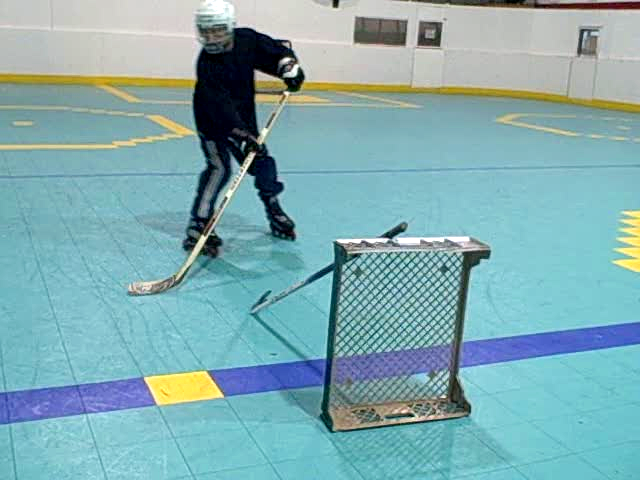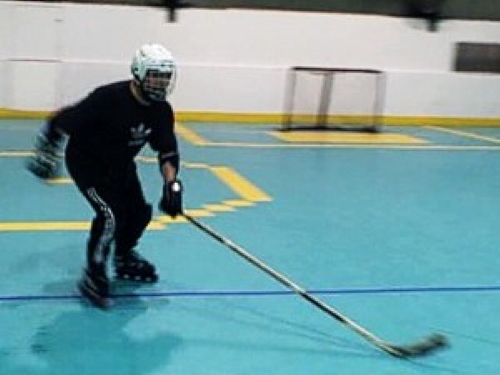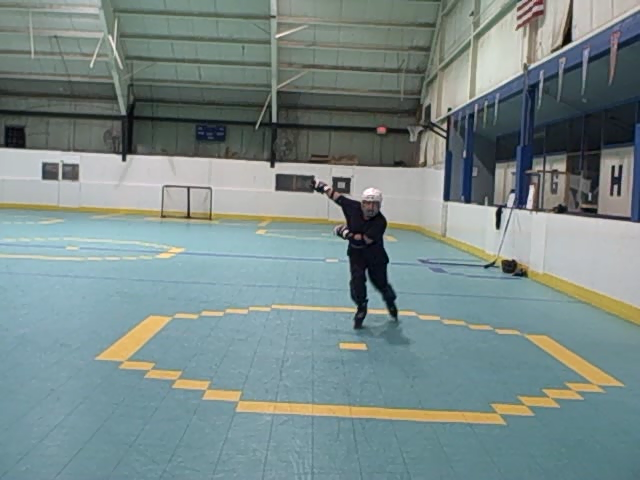Jerry Z’s New Stick
Okay, after several hockey friends recently hit me with questions having to do with hockey sticks, it struck me that I might dig back into the CoachChic.com archives for a long ago post where I really got into a former student’s issues with his stick. Actually, it has to do with my adult roller hockey student, Jerry Z, some of the discussions he and I had surrounding his new stick (and his change in skates), and I’m pretty sure this is going to provide some interesting food for thought for members at all levels of the game.

For sure it took some time to convince Jerry that a new stick would make a difference in his ball handling (remember, he’s a roller hockey and deck hockey player). So, he finally took the plunge, and here’s an excerpt from his first email back to me:
“I had a game on Thursday night. It was the first time I used the composite stick. Even though the stick is too long — I haven’t cut it down to size yet — I can feel the difference. You woulda laughed… I had a goal where I pushed the ball between the defender’s feet and got it on the other side, then shot high — hit the goalie’s shoulder pads and in. Later I had a pass I sent a guy from pretty much one face-off circle to the other one and he one-timed it in for a goal. The stick is light and allows me to do things I haven’t been able to do before.”
Geeeeeze, Jerry, I’ve been telling you that for weeks!
Days later my good friend wrote me with this:
“I cut the new stick down to a smaller size than I’m used to, so it’s lighter and I can stickhandle with it better. It also forces me to bend the knees while skating. I don’t think my shots go any faster than with a wooden stick, maybe slightly slower? And with a puck it seemed like I didn’t get solid contact at all, especially on one-timers. I need more experience with it.
Okay, some very good observations from Jerry, and ones that are worthy of discussion here.

- Although a lighter stick might ultimately whip quicker into a puck or ball on the slap shot, a shorter stick does usually result in a slightly slower shot. If you can envision it, Jerry’s lever arm — which is the stick-shaft — is slightly shorter, and thusly creates slightly less force than a longer one. Here’s the trade-off, though… Most poor puckhandlers just don’t get-off that many shots (they’re just too slow getting open and tee-ing the puck). So, what I advise players to do is to use a short stick until puckhandling becomes a strength. With that, the player can trade-off a little of that skill — by going to a slightly longer stick, in order to get a little harder shot.
- As for Jerry’s difficulty in contacting a puck, I’ll suggest that the ball is easier to drive than a puck. Thusly, he probably notices more the fact that he isn’t making perfect contact with the puck.
Then, because he is still trying to get some outdoor practices in — and, because he’s still experimenting back and forth between two different pairs of in-line skates, Jerry added this to his most recent email:
“I’m using the (enter brand name) skates that we decided to banish from the games. (As long ago members might recall, I found one pair of Jerry’s skates to be of nice quality, the other pair real cheapies!) These seem slow and loose in comparison. Do you think I’m hurting myself practicing with these clodhoppers? I’m upset at (enter brand name) for these.
Okay, a couple of things needed addressing here…

- I wrote back to suggest that Jerry stay with the good quality skates whenever he can. I figure he’s going to be able to do more — and improve more — in those. If there’s a problem here, outdoor use will ultimately wear the wheels and require earlier than normal replacement. Still, wheels are relatively inexpensive.
- I told him not to be upset with that skate maker. Most companies make quality skates for competitive players and not so good ones for purely recreational use.
- I also suggested that his stumbling upon poor quality skates was the result of his initially shopping at places other than a pro shop where other, more serious skaters shop. Let’s face it, department stores are going to stock their shelves with cheaper, rec type gear, while pro shops generally deal in quality.
- I usually suggest the latter approach to new hockey players and parents, as well, especially if they need help or advice on selection or fitting. Once a shopper gains experience, he or she can likely find some deals even at yard sales!
In closing, I’m hoping members found it interesting as I attempted to help Jerry improve upon his game. After all, he always asked great questions and made some interesting observations. And, as many of you might be discovering, he and I were forced to do some of the same kinds of troubleshooting so many other hockey players, parents and coaches face.